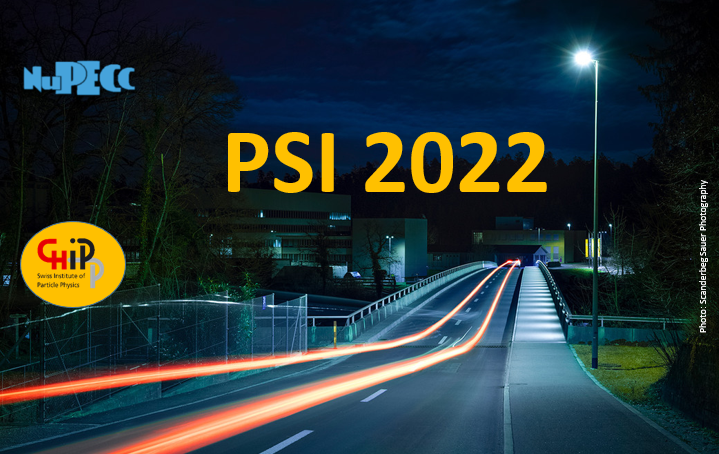Speaker
Description
T. Hume $^{1, 2, ∗}$
(on behalf of the muEDM Collaboration)
$^1$ ETH Zürich, 8093 Zürich, Switzerland
$^2$ Paul Scherrer Institute, 5232 Villigen PSI, Switzerland
The current limit on the muon electric dipole moment (muEDM) of $d_\mu<1.8\times10^{-19}\,e\mathrm{cm}\,\,(95\%\,\,\mathrm{C.L.})$[1] could be improved by $\sim10^3$ with a dedicated muEDM Experiment at PSI.
An EDM signal would be clear evidence of CP violation, while its absence at current sensitivity would constrain Beyond Standard Model theories.
The proposed muEDM Experiment [2] will employ the frozen-spin technique [3] in a compact storage ring, necessitating the placement of high voltage electrodes proximate to the design orbit of the muon.
Within the magnetic field of the storage ring, the decay positrons will intersect repeatedly with the electrodes and internal tracking detectors used to reconstruct their trajectories.
Simulations must incorporate the effects of multiple Coulomb scattering in these materials.
Ongoing simulation studies are central to informing design choices and predicting the systematic uncertainties of the measurement.
It is therefore important that the underlying models of multiple Coulomb scattering at the relevant momenta and material thicknesses are experimentally verified.
Multiple scattering of positrons and muons in graphite, Pokalon, silicon and Mylar was measured for momenta $50\,\mathrm{MeV}/c-140\,\mathrm{MeV}/c$ on the $\pi$E1 beamline at PSI, using a beam telescope composed of three upstream and two downstream MuPix10 [4] silicon pixel sensors.
Preliminary results validating these models will be presented and the implications for the positron reconstruction efficiency discussed.
[1] G.W. Bennett et al., Phys. Rev. D, 80, 052008 (2009).
[2] A. Adelmann et al. arXiv:2102.08838 (2021).
[3] F.J.M. Farley et al., Phys. Rev. Lett., 93, 052001 (2004).
[4] H. Augustin et al., Nucl. Instrum. Methods A, 979, 164441. (2020).
$^∗$ timothy.hume@psi.ch

